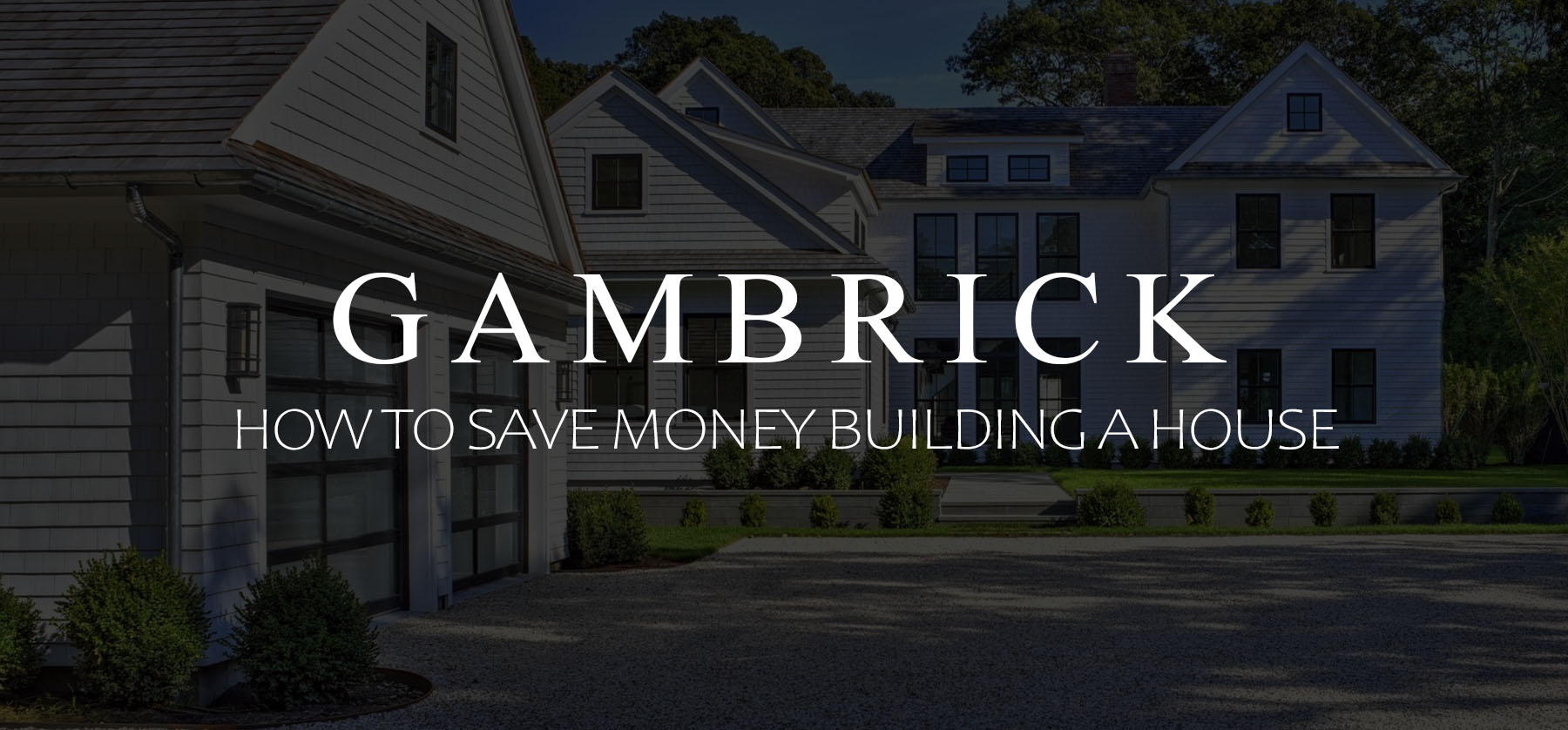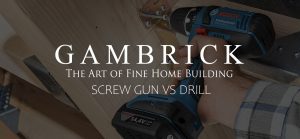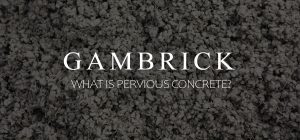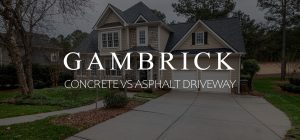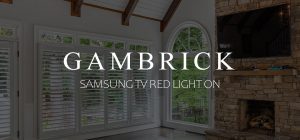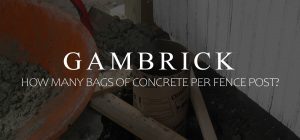How To Save Money Building A House
Are you looking for tips on how to save money building a house? If so, you’re in the right place to find a bunch of great money saving techniques.
What better place is there to learn how to save money building a new home than from the builder. We know where all the hidden fees are and how money tends to get lost. As a custom builder, we have to build each home to the highest quality standard. But they also have to be built cheap enough for us to make money. If your a real estate investor or a person building their first home then you’ll face many of the same problems. Believe me, it’s not an easy thing to do. You don’t ever want to sacrifice quality to make more money. So how do you do it? We’ve put together a list of our best tips and tricks that homeowners can use to save money when building a new home.
Learning how to save more money can help you in so many ways other than just building a new home. You may be able to use some of these tips to stop living paycheck to paycheck, pay off your debt, save for your future, and more. Learning to save money in real estate can help you in all sorts of other areas throughout your life.
There are so many ways to learn how to save money. Continue reading below to learn our best money saving tips for building a new home so that you can save money and manage your money better ASAP.
How To Save Money On New Home Construction
There are so many different ways to save money when you build a new home. It’s one of the biggest investments most people will ever make, and if you do it right, can make you a lot of money. Rich even. But you have to be smart, disciplined and careful.
We’re gonna share with you some of the best tips and tricks we’ve learned over the years about how to save money building a new home.
Build A Home That’s Easy To Sell And Sell Fast
Always keep in mind that your trying to make money. The object is to build a home that’s of high quality, for as little as possible and will sell fast. Don’t build the home you personally like, build the home your buyers will.
I can’t stress this enough. The home isn’t for you, it’s for them. Do lots of research and find out what people like by looking at the local homes that have sold the quickest. This will vary from place to place so we can’t give specific design advise other than to do lot’s of research. Real estate is a funny business. Everything is local. Even within a small town, in one development homes may be Colonial with white siding and black shutters, you dive a mile down the road and they’re all brick.
Research and planning are key.
Match not only the exterior style but inside too. The level of finish. Don’t over build or under build. Build a new home that’s appropriate for your area. If all the homes selling in your area are 3500 sq. ft. with brick siding, granite countertops, hardwood floors and 4 bedrooms then that’s what you build. Even if you don’t like it your customers do. Don’t build a 4000 sq. ft. modern home. It may be beautiful and you may love it, but the local buyer’s might not which means the home will sit.
One of the biggest things we see wrong with inexperienced builders is they tend to build homes that are poorly designed for the area. They’re either over built or the wrong style.
If you want to save money when building a new home then build what you know will sell and sell fast. Otherwise fees, insurance, taxes, banks, utilities, etc. will eat up all your profits.
Have A Plan & A Budget. Plan, Plan, Plan.
Before you do anything at all in construction you need to have a plan. We do months of planning on every job before we buy a single nail. Going into any construction project without a plan is a recipe for disaster. And it has to be a good plan that makes sense. Executing a bad plan wouldn’t save you much money.
Before we even buy the land for a new home we research local real estate values around the site. What are homes selling for, how big are they, what do they look like, how many bedrooms & bathrooms do they have, what’s the level of finish, etc. Questions like these help us put together a plan.
Once we have a good outline of the kind of house we have to build then we figure out how much it costs to build it. We’ll get into this a little more later.
Add up the cost to build your new home with the cost of the land and any other expenses you’ll have to pay like permits, site work, engineering, plans, demolition, bank fees, etc. The total cost is then subtracted from the estimated sales priced based on the price of the other homes around it. That number you end up with is your projected profit. If your happy with it then consider moving to the next step, if not, find another lot.
Keep in mind at this point the numbers will be very rough. Don’t spend too much time on a project unless the rough numbers look really good. This should also be done fairly quickly. It’s just a way to evaluate if the land is a good deal or not.
Design The Home With A Budget In Mind
If the rough numbers make sense then move on to designing the home. At this point you still don’t have to own any land. This is still rough figuring except in more detail.
Let’s say you’ve decided that you have to build a 3000 sq. ft. home because that’s what’s right for the area. Now go room by room and start making choices based on what other local homes have. Only compare to homes that have sold quickly and for the most money. Any realtor can tell you if a home has had multiple offers or not.
- Pick a style for the home that’ll be easy to sell. Not one that you personally love.
- Choose the right square footage. Over sizing a home is a big mistake and a great way to waste money.
- What type of roofing and siding are right.
- Pick out all your exterior windows and doors including garage doors.
- Choose a flooring for each room.
- Pick all your trim designs including any shiplap, coffered ceilings or wall panelings. Trim can be a lot more than just base, window and door.
- Spec the kitchen and bathrooms. Choose appliances, cabinets, countertops, faucets, sinks, tubs, tile, glass, etc.
- Design an exterior and interior lighting and electrical package.
- Don’t forget to get a price for each staircase along with the railings. The main stairs will generally be much nicer than the ones leading to your basement.
- Does the house need a back deck or front porch?
Once you have a basic design of the home and all your rough pricing done, which is based on a similar home that’s recently sold for top dollar in the area, you can start looking at numbers. If the projected profit is still good then you can move to the next step.
Saving Money On New Home Construction
OK. So you’ve done all your research, found the perfect lot and example home. One that’s recently sold for a lot of money and sold fast with multiple offers. The projected profit looks great and your moving ahead with your plans to build a new home. Now comes the hard part. You have to actually build the home. And it has to be built on time and hopefully under budget with the highest possible quality.
It’s that under budget and on time part that we’ll be giving you tips and tricks on how to do ahead.
1. Use The Home Depot Bid Room
Most people don’t realize that Home Depot and other retailers have what’s called a bid room. It’s a place where you can special order building materials in bulk at a big discount. We plan ahead and buy everything we need through the bid room. The bigger the order the bigger the potential discount.
We use this mostly on brand name items and not raw materials. Honestly, framing wood isn’t as good from a retailer as it is from a lumber yard so we buy all of our raw materials from them. But Andersen windows are the same no matter where you buy them. We order all of out Andersen windows and doors from Home Depot and all our Pellas from Lowes. It saves a ton of money.
We built a house is Silverton, NJ just last year with Andersen 400 series windows and doors that were $42,000 retail. The Home Depot bid room gave them to us for $34,000. That’s a savings of $8,000 and most people don’t even know the bid room exists.
All suppliers and lumber yards have this type of service. We don’t buy anything retail. The only drawback is that you have to order everything at once and in bulk. Small orders don’t work.
Like we always say. If you want to save money building a new home then Plan, Plan, Plan.
2. Never Pay Retail
When your building a new home to make money then your a business. And a business doesn’t pay retail. Never Pay Retail. It’s one of our biggest and best how to save money building a house tips.
In business, everything is negotiable. With proper planning you’ll have a list of everything you need. All the finishes and raw materials should be figured out well before you break ground. We negotiate everything we use on the job and take bids on materials months before we start work.
Sure, every now and then you’ll run to Home Depot to pick up a box of screws or some tape. These are very costly trips to make in both time and money. Every time you go to a Home Depot to pick up something small and pay retail your losing money.
All those small things should get put on a list and are ordered along with other bulk materials for the next home you build. Each home is a learning experience where you’ll make mistakes that cost money. At the end you can figure out all those trips and what they cost. It’ll add up to a lot.
If a build goes to plan you should never be short of any material and you should always have the right amount of whatever you need when you need it. Plan, Plan, Plan.
3. Buy In Urban Enterprise Zones
Here in NJ sales tax is 6.5% on all building materials. However, in Lakewood, which is considered an Urban Enterprise Zone, the sales tax is only 3.5%. That’s a big savings of $3500 cash on every $100,000 you can save just buy ordering your materials from a Lakewood store. Why would you buy them anywhere else in the state?
I realize most of the people reading this are probably not from NJ. But you may have development zones in your state. It’s worth looking into. Buying materials for a home is very expensive so saving 3.5% for doing absolutely nothing sounds good to me.
You’ll notice that most of the tips and tricks we recommend for how to save money building a house are small things. But if you do them all it can turn a build that was once considered break even or a small loss into a profitable job.
Most builder we know that don’t make money is due to poor organization, planning and overspending in lots of small ways. Don’t be one of those people. A 3.5% return on all your materials is a nice savings.
This doesn’t effect the sales price because these are State taxes that have nothing to do with what materials cost.
Most big box retailers like Home Depot won’t be located in an Urban Enterprise Zone. It’s more for lumber yards, distributors and wholesalers. You can still negotiate better deals on bulk orders though. We never pay retail.
4. DIY
Labor isn’t cheap so anything you can do yourself will save money. But be realistic, we recommend homeowners do some small things while keeping larger task for professionals.
Only do things that won’t hold up construction. It’s a really bad idea to delay work for a month so you can save $1,000 doing something yourself. The time lost usually costs more than what you save.
Here’s a few things you can do yourself to save money on the build that won’t slow things down.
- Shelving is a great place for a homeowner to get involved. Installing pantry or closet shelves is super easy.
- Install all the outlet and switch plates yourself. Electricians hate coming back for a day or two after paint to screw them in.
- Cleanup. Hiring a cleaning crew at the end of the build typically costs us around $750. Take a night or two and do it yourself.
- Install your own cabinet knobs. Don’t do this if the holes aren’t predrilled unless you know how.
- Touch ups. Small areas that need paint, caulk or spackle may need to be done and it’s not worth the time or money to hire someone to do it.
- Installing a doorbell camera or aftermarket thermostat.
- Install the door stops and knobs.
Basically anything you feel comfortable enough to do yourself, and that won’t slow down the job, is worth doing. It may not sound like much, but all this simple stuff can add up to a few thousand dollars.
Pro Tip: Get bids first and then negotiate the amount you want taken off for what you’ll do yourself. Most subs will easily knock off $250 – $500 for small stuff they don’t really want to do anyway.
Every dollar you save during construction is another dollar you make at closing.
5. Paint The Details Yourself
While we wouldn’t generally recommend painting the entire home yourself unless your building a small home. Feel free to take care of the smaller detail stuff.
There are two types of painters that cost vastly different amounts.
- Spray painters will come in, tape and mask whatever doesn’t need painting like the windows, and then spray the entire house. It’s fast, easy and cheap.
- Then there are detail painters who carefully paint trim, spindles, windows, doors or wall paneling. This is finish brush work that takes a lot of time and money.
Hire someone to spray the whole house. Typically we choose white for the ceilings and a color for the walls. Sprayers will paint the walls however you like but the least amount of colors the cheaper it is. Your average 3000 sq. ft. home can be sprayed in 2 days. This bulk painting is pretty cheap.
Finish painters come in next and carefully paint all the trim, wall paneling, windows, doors, spindles, and other detail areas. They also go over all the walls for any small areas that need a touch up. This process is expensive and takes a while. It’s not uncommon for us to spend a month finishing all the touch ups and detail painting.
This is a great place for you to step in and get some work done and since it’s one of the last things we do it doesn’t hold up building the house.
6. Get Bids & Negotiate
When it comes to doing all the work you can’t do yourself, which is probably the vast majority of the house. Get multiple bids.
Everyone always recommends the same thing and that’s get 3 bids. But that’s not what builders do at all. We get at least 2 but sometimes we get 5 or 6. It all depends on what we need done and how many good companies we can find to bid the work. Don’t be afraid to get lots of bids, the more options you have the better it is for you.
Only take bids from qualified bidders. In government or big dollar commercial work you have to get preapproved just to put in a bid. And even if your the lowest bidder that’s not always a guarantee you’ll get the job. You still have to put up a bond and prove you can do the work. Residential work is so much easier. Homeowners just give contractors work without doing their research. As a builder we not only check out each bidders company and insurance but also get reference and ask to see actual work.
Once we have all of our bids from qualified bidders we negotiate. Don’t be afraid to negotiate because that’s where you can save real money. If a bid comes in for $15,000 we try and talk them down to $13,500. That’s a $1,500 saving for making a few phone calls.
There’s wiggle room in every bid for both labor and materials but you have to negotiate for them.
Negotiating better deals is probably the biggest opportunity to save money building a new home. Never accept a bid as it’s presented or pay retail.
7. Don’t Oversize The Home
This goes all the way back to the planning stage. If the appropriate size home for the area your building in is 2000 sq. ft. then build around 2000 sq. ft. At most we vary this by 10%. 1800 sq. ft. is probably still ok but we’d go as high as 2200. However we wouldn’t build a home that’s 3000.
This is a huge problem we see with inexperienced builders. The bigger the home the more it costs. It takes more materials and more labor to build big.
Big is a relative term. In some areas 3000 sq. ft. would be considered a big home while in others 3000 sq. ft. would be tiny. The size of the home has to be right for the area. Anything bigger is a waste of money. You won’t see an ROI for all that extra size. Because it costs more to build you’ll have to raise the sale price which squeezes out a lot of potential buyers. This makes the home take longer to sell and costs even more money.
Another problem with an oversized home is time. It takes longer to build a bigger home. Every month you spend on a build you’ll have payments to make. If you want to learn how to save money building a new house then you have to be smart.
Design the home to be the right size with the right level of finish for the area. Build it as fast as possible with high quality and for as little as possible. If you do all those things you’ll have a much better chance at being successful.
8. Don’t Overdo The Finishes
This is sort of the same as building the house too big. Just don’t overdo things. Professional builder that have been in business for decades never do this. Just copy what they all do. The level of finish has to be right for the area your selling in. Anything more is a waste of money.
Let’s say your building a home that you hope to sell for $350,000. You buy land for 50k, spend 200k on construction and then hope to make 100k gross. Pay your agent and other closing costs and maybe you walk away with 80k gross on a 6-8month build. That’s a typical small new construction deal here in NJ. This home has vinyl siding, LG appliances, granite and hardwood throughout. It’s a really nice home design that builders like to build because it sells fast and is very reliable. A bread and butter type home.
Now lets say a novice comes in and installs Viking appliances worth 25k, marble countertops, a coffered ceiling, wainscoting, stone or brick veneer and a fireplace in every room. They add 75k in extras that should be there and put the home for sale for 500k. Guess what. It’s gonna sit on the market while they lower the price every month and lose money. Then they dump it for 400k and realize they barely broke even or lost money.
This is unfortunately the typical scenario we see every year with inexperienced builders.
Don’t Over Build.
9. Include All The Amenities
In every area there are certain things considered a standard. You have to find out what those things are and make sure you tick all the boxes. Buyers are comparing your home with other new and used homes in the area and yours has to have all the features everyone else does or you’ll lose out or invite low ball offers to compensate for the missing amenity. This is still all a part of good planing and design.
- How many bedrooms and bathrooms are expected.
- Do the local homes all have a pool.
- Does the yard need to be fenced in.
- Do the homes have a basement, crawl space, slab or pilings.
- Will you need a garage and if so how large.
- What about an attic.
- Central air conditioning.
Making sure you have everything all the other homes have is important. Don’t include things you don’t need, again, don’t overbuild. But when buyers compare your home to some others they’ll offer you less for whatever your missing.
Even if you include amenities that are cheap you still have to have them so that they’re included in the listing. When buyers tell the realtor they want a 3 bathroom house because every home in the area has 3 then don’t build a home with only 2, and you don’t need 4. Build it with 3. They don’t all have to be expensive bathrooms but you need 3.
The same is true of a fence. If every comp home in the area has a fence then put in a fence or they’ll drop the bid what they think a fence will cost. Don’t let them do that. Just install a cheap fence.
Making sure you tick all the boxes will keep the sale price high by eliminating asks from the buyer.
10. Build An Open Floor Plan
As we mentioned earlier, a smaller home is cheaper to build than a larger one. You want to stay within 10% of the medium size of all the comp houses your competing with and we’d recommend not being the smallest. Somewhere in the middle is generally best if you want a fast sale at top dollar.Don’t get caught up with needing a big number. Builders tend to do that. Everyone wants to build bigger but bigger isn’t necessarily better for your profit margin.
Homes are generally leveling off or getting smaller anyway so you’ll be with the trend home buyers want. For the last decade or two, home’s just kept getting bigger and bigger, but that’s reversing.
If the homes in the area range between 2000 – 2500 sq ft, the average size is 2250. We’d build out home around 2150 sq ft with an open floor plan.
An open home will feel bigger and on paper you’ll be in the right sq. ft. range for the area.
A smaller home means less labor and materials on everything. All the small things add up. Less trim, drywall, foundation, framing, siding, paint, etc.
Even if you build a basic level home for $110 per sq. ft. then slashing 100 sq. ft. will save you 11 grand. However, of your building a custom home that’s $220 per sq. ft. that’s 22 grand per 100.
Just make sure that if your cutting a little square footage that you still big enough for your area and not the smallest home. You want your home to be right in the middle. As a builder you don’t want to be the cheapest, smallest house or the biggest and most expensive.
The most money is to be made in the middle and a great way to save some money on a new construction is to cut the size down just a little.
11. Add Size Where It’s Cheap
If for whatever reason you don’t want to slash any square footage off the home then design it in a smart way. When builders talk about the sq. ft. cost to build a home it’s an average cost. In reality every room has a different cost. In the end we add all the numbers together and then dive by the size to get an average cost, but when you look into the numbers you can find big savings.
Kitchens and bathrooms are the most expensive rooms to finish by far. It’s actually not even close. Because we cram all sorts of expensive appliances, countertops, tile, tubs, showers, glass, faucets, sinks, etc. into these rooms the prices are enormous.
When you look at a family room, dining room, office or bedroom however, the cost is very low. They’re just empty rooms with drywall, electric, flooring and trim.
If you want to add size to a home then add it cheaply to save money.
Let’s say you want to add another 250 sq. ft. to a 2000 sq. ft. home. You could make all the bathrooms or kitchen a little bigger, make the rooms a little bigger or add in an additional room like a home office or flex room. Which is best?
Making the rooms bigger or adding in a room with bare finishes is by far the cheapest option. The cost to build these rooms is generally around 30% the cost of bathrooms or a kitchen.
You can have the big square foot numbers if you want, just make sure you design the home in a smart way so that big number doesn’t end up costing a fortune.
12. Don’t Accept Overages
Discipline is very important in the building industry. That’s why we do all of our designs long before we begin construction .During the process it’s easy to change your mind or fall in love with a certain finish or upgrade. But you have to maintain discipline. Design a home with a plan and a budget and then stick to the budget.
The idea is to come in under budget not over. Upgrades and change orders cost a fortune so make sure you don’t have any.
Once you negotiate with a subcontractor and sign a contract then everything is set. They’ll do a specified job for a set amount of money in a predetermined amount of time. Once you change things your essentially renegotiating the entire contract. Your not gonna get multiple bids or chew them down anymore. The sub will give you a bid for the new work and unless it’s outrageous you’ll have to pay it. If it is super high and you say no then you’ll have to hire someone new for the new work. It’s a huge mess and subs know it. They love change orders because they make so much money on them.
These types of overages are very bad for a builders bottom line. Have discipline and keep them out of the build.
If you do have to make changes which could cause an overage then do it before a sub starts working and before you have a contract, not in the middle or work or after works begun. If you catch changes early then your just altering your own design and not involving subcontractors so there won’t be any change orders. You can still get multiple bids and negotiate good prices.
13. Order Your Own Materials
We always order our own materials. Subcontractors don’t spend the time to get good deals and if they do they generally keep the profits to themselves. Once a contract is signed for a set amount of money we owe the sub that exact amount. Even if they got the materials for free it wouldn’t benefit us, they keep all the money.
Another benefit of sourcing your own materials is bulk ordering. We discussed this early.
For example, let’s say the best deal you can find is $800 for a hot water heater. It doesn’t matter if you or your contractor buys it, it’s $800 bucks. But, if you order it along with your windows, doors and lumber, a $100k order, then that hot water heater will probably cost around $700.
By ordering in bulk we generally get 10 – 20% off the total so it’s worth the effort to plan ahead and order everything at once.
Are you seeing a pattern here. Plan, Plan, Plan and don’t pay retail. Negotiate everything. This is how you save money when building a new house.
14. Know When To Splurge
Every home needs a few selling points. Some wow factor that makes a buyer fall in love with the house. Big builders like Toll Brothers have built a billion dollar business based on this concept.
If you go into a tract home that’s big but pretty generic. You’ll notice they spend a lot on the entry, both inside and out, the kitchen, living room and master bathroom. Do you know why? Because those things are showy and sell the house.
Don’t be afraid to spend a little more on finishes where it counts. Especially in a tight real estate market.
Make some compromises in the design to compensate. If you want to spend more in the kitchen then spend a little less in a bathroom that no one will notice or make something a little smaller to even out the added expense. There’s a hundred different things you’ll have to decide when building a new home. Give a little somewhere to get a little more where it counts.
During a walk through of a new home you’ll notice buyers really only inspect certain places. The entry is the first thing they see so you really have to nail it but then they always walk right to the kitchen and living room. That’s what they want to see on the first floor. Then they check out the dining room and walk upstairs right to the master bathroom. Sure, they glance at the small bathrooms, laundry and other bedrooms but it’s those few things that really sell the home.
Pro Tip: We always include at least one thing that really looks overpriced for the price point of the home. Something that’ll make a lasting impression. And we don’t spend a lot of money doing it. Add an upgrade somewhere that makes them say wow at least once when they’re doing the walk through at least once and you’ve got a much better chance of selling the home for top dollar.
15. Prefinished Or Floating Wood Floors
If your one of those people that thinks prefinished or floating wood floors are cheap then think again.
In the past floating wood and prefinished hardwood floors were cheaper options than traditional wood floors but not any more.
Prefinished wood floors like Bruce have a much better finish than they used to, are available in more colors and a wider variety of styles and sizes. Big name brands are sold at big retailers like Home Depot, Lowes and even Costco which means you can get good deals and sales on product all the time. And they qualify as part of a bulk order through the bid room. There are also generic brands on the market you can get even cheaper.
Floating wood floors have made huge strides in terms of quality over the past decade. Sure, there are still some cheap and cheesy brands we wouldn’t recommend. But there are also some high end flooring options that in some ways rival real wood. Engineered floors are even used in multi million dollar custom homes so the blanket statement that they’re all cheap definitely isn’t true any more.
Traditional wood floors needed sanding, staining and finishing. By eliminating all that you simplify the process making it possible to do much cheaper. This is a big way to save money when building a new home.
Some flooring products are so easy to install you can even do it yourself with a simple chop saw. The boards have tracts that easily snap together to form a solid, tight bond. If you have even a little skill and some basic tools it’s hard to go wrong.
16. Get An Interest Only Construction Loan
I can’t tell you how many people don’t manage the financing on a new construction deal the right way. Banks will give you a new construction loan that’s interest only until you get a CO. Most times the home can be sold before the CO is issued which means you never have to pay a penny of principle.
Just like with materials and labor, financing terms are negotiable. Talk to multiple banks about the terms they offer and what loan programs you qualify for before signing a deal. Shop for the lowest interest rate and the best terms.
When it comes to comparing interest rates and good terms. We like better terms. Getting an interest only loan, even if the rate is a little higher, is better for us because we plan on a quick sale. Low interest rates are better for us on a property we plan on keeping for a while. Although if we could get a long term interest only loan on a rental we’d take it.
Ask the bank about incentives too. Some will roll all the fees and closing costs into the loan so your out of pocket expenses will be as low as possible.
When it’s all done, the house is built and sold, you’ll calculate how much you made in relation to how much cash you put out. That’s why banks and good loan terms are so expensive. Low out of pocket expenses with a low monthly payment is better for a builder because we don’t plan on keeping the house long term anyway.
Also make sure there are no hidden fees involved when you pay off the loan early. If the loan term is 2 or 3 years but you know the house will be sold in a year make sure they don’t charge you.
Be up font about your business plans with the bank. Having a good relationship with a bank or two, especially local banks, can help your business in the long run.
17. Buy Remnants
A remnant is the leftover parts of a stone slab. When you buy granite countertops, the dealer will come to the site and make a template from your cabinets. They’ll cut the countertop out of a large slab of stone. The leftover bits get sold as a remnant. These pieces are generally sold at a large discount. It’s a great way to save money on a new construction.
- For large single pieces of stone, like what you need for a large island, you can’t buy a remnant. But for smaller pieces they work great.
- Any small pieces of kitchen counter or the countertops in a bathroom should all be remnants. The price savings is too good to pass up.
- Use a remnant on any outdoor stone countertops you need.
- Some designs use stone for around a fireplace. This should be a remnant.
When your designing your kitchens or bath you can plan ahead to use remnants. Plan on arranging the kitchen or bath in a way that uses more smaller pieces rather than huge slabs.
Buying remnants can cut your countertop costs in half.
18. Buy Material Close Outs
Call around local suppliers and see if they have any returns or closeouts. You’ll be surprised how often these deals get offered. We buy entire palettes at a time of materials like pavers or tile that suppliers don’t want to stock anymore. They practically give the stuff away just so they can bring in new product.
There are lots of reasons dealers have closeout sales like when a products being discontinued. Just because it’s being sold cheap doesn’t mean there’s anything wrong with it.
Generally there’s nothing wrong with the products but we still recommend you inspect everything for damage anyway. Because the products are sold so cheap it’s usually as is with no returns, so make sure there are no issues before you take possession.
Also make sure there’s more than enough to finish the job because you can’t go to the store and buy more.
Pro Tip: Buy things that aren’t trendy. A closeout on 12″ square calacatta marble tile is a no braner. You can use them on just about any house you build. But some exotic tile with an elaborate print that’s been in style for 20 minutes is a bad idea to buy.
This is also true of tools and other supplies. We’ll buy just about anything we can at a closeout as long as it’s brand new and under warranty. Ceiling fans, toilets, sinks, and light fixtures are some of the most common items that are sold this way.
As long as the style is generic, not trendy and works in a wide variety of homes, we’ll take the deal.
19. Don’t Be Afraid To Import
Just like almost every industry in the world, builders are starting to source there own products from overseas. China is by far the biggest supplier but it’s not the only one. India, Europe, Pakistan, Japan, and Russia are all places that export great products at really great prices.
There’s a fear of the unknown which is why most people don’t try it. Maybe I’ll get ripped off, what happens if the products aren’t very good, or how do I know I can trust the company I’m dealing with. The reality of the world we live in today is that almost everything we buy comes from overseas anyway. Even businesses that manufacture a finished product here still sources materials overseas.
Many companies are basically drop shippers that sell a product online and then get it delivered direct to consumer without even taking any inventory. The internet has made it very easy to do and very safe.
There are some new things you’ll have to learn which we won’t go into detail here, but it’s worth learning them. If you want to learn how to save money building a new house then this is a great place to start. The potential savings are enormous.
For example. Right now we’re designing and building a new custom Passive House for a client. The best triple pane windows we can ind are are made in Germany. And they cost half as much as the US suppliers. Why would be buy from the local supplier when we can buy a much better product direct from the manufacturer for half the cost? That local supplier isn’t actually making the windows here in NJ. They import them from overseas too.
Cut pout the middle man and buy direct from manufacturers and suppliers whenever you can. Those companies will generally be overseas which is why it’s so important to overcome your fears and start importing.
20. Start A Business
One of the best ways to save money building a house is to start a business. It doesn’t cost much to register an LLC, we started ours for under $500 bucks. But the potential benefits can be huge. Not only do you get all sorts of additional business right offs from the governments but you’ll also get lots of other business related discounts like better credit card rates,higher limits, better loans, special discounts and deals only available to a business.
You’ll also gain access to what’s called B2B services. This stands for business to business. Of course you have to have a business in order to gain access to any of these benefits.
- We get special deals and pricing that homeowners don’t get which include business credit accounts at stores with lower interest rates.
- Banks give us access to better deals, loans and lower interest rates too.
- Many special offers are available to businesses only like on paint. We have a deal with Benjamin Moore because we’re a business and they give us great deals.
- Additional tax right offs.
- Profits for a business are taxed very different from a homeowner.
- Real estate flips are often times tax free if you reinvest the money within a certain amount of time. This isn’t available to a homeowner.
- Grants and other investments are sometimes available to a business and not a homeowner.
- Personal liability is less with an LLC which can potentially save you a lot of money.
You should definitely speak with an attorney or CPA if this is something you’d consider doing. Local laws and regulations can vary depending on where you live.
When you want to build homes for less money, even if it’s just your own personal home, owning a business can potentially help.
Even if you do it just to get access to the special deals and sales at Home Depot or better credit card rates it may be worth it.
Summary: How To Save Money Building A House
How to save money building a house is such a great topic to write about. We’ve spent our entire career designing and building custom homes and love the chance to share some of that financial knowledge with you. Whether your a first time home builder looking to turn a profit or a homeowner building their first home, doing it cheaper makes sense. And best of all you can do it without sacrificing on quality. In some cases you can even increase the quality of the home by investing those savings back into the build. Many of these principles we use can be used by you too in other aspects of your life.
Being smart with money has all sorts of benefits we know you’ll enjoy.
If you have any questions or comments e-mail us any time. We’d love to hear from you.
